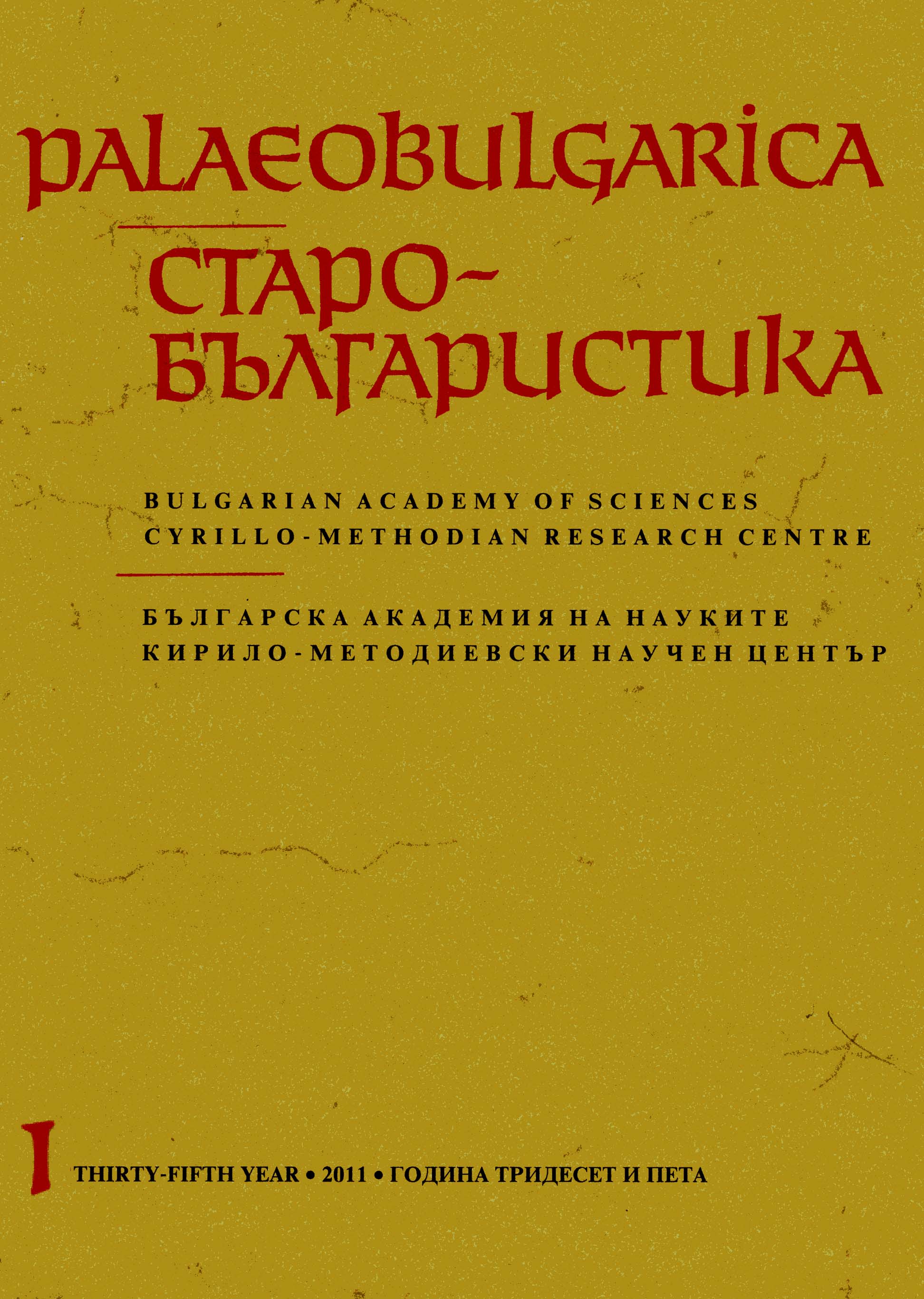Кирилло-мефодиевские источники и памятники древней славянской книжности в переводах на польский язык: из истории рецепции
Cyrillo-Methodian Sources and Monuments of Old Slavonic Literature in Translation into Polish: on the History of Their Reception
Author(s): Ivan N. PetrovSubject(s): Language and Literature Studies
Published by: Кирило-Методиевски научен център при Българска академия на науките
Summary/Abstract: The reception of the Cyrillo-Methodian heritage, reflected in Old Slavonic and Church Slavonic literature, encompasses not only scholarly interpretations and commentaries, but also translations into modern languages. For nations not belonging to the sphere of Slavia Orthodoxa and not employing the Church Slavonic language in daily religious practice, those translations frequently provide the sole opportunity of getting acquainted with the cultural characteristics of the Orthodox Slavs. The article presents the preliminary results of a project carried out at the University of Lodz aimed at compiling a commented bibliography of Polish translations of Old Bulgarian, Old Serbian and Old Russian literature as well as of Church Slavonic literary works of the Polish-Lithuanian Commonwealth. On the basis of the material collected so far, covering the 19th, 20th and the beginning of the 21st century, it is possible to divide the history of those translations into three basic stages and indicate the characteristic features of each.Initially (19th - first half of the 20th century) Polish translations of works stemming from the Slavia Orthodoxa were primarily literary in character and were associated with the avid interest in Slavic antiquities and folk culture which flourished during the Romantic period. Moreover, they were widely used in research dedicated to the study of historical sources, especially those related in someway to the history of Poland. A few of the works translated several times during this period include the Life of Methodius, the Tale of Bygone Years or the Tale of Igors Campaign. The years after World War II witnessed a change in this situation, as the principal objective of translating the sources shifted towards university teaching. As a result, a great number of Old Russian (subsequently also Old Serbian and Old Bulgarian) works were published in Polish, both in separate editions and in anthologies. Apart from being used as study aids for university courses, some of those texts have become the object of research pertaining to translation studies and historical linguistics. Aside from Slavists and professional translators, the clergy of the Polish Autocephalous Orthodox Church, as well as representatives of Uniate parishes, have also been rather active in the field of translating from Church Slavonic. Their work comprises chiefly texts used during services, and the main purpose of the translations is religious instruction and didactics. Some of the editions are intended for Poles who are not familiar with the ChurchSlavonic language that is used in the services. The project of assembling a comprehensive bibliography and history of Polish translations of Slavia Orthodoxa literature may serve to illustrate one of the European aspects of the Cyrillo-Methodian legacy in a broad sense.
Journal: PALAEOBULGARICA / СТАРОБЪЛГАРИСТИКА
- Issue Year: 2011
- Issue No: 1
- Page Range: 71-79
- Page Count: 9
- Language: Russian
- Content File-PDF

